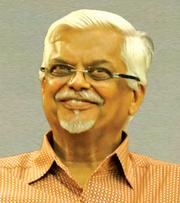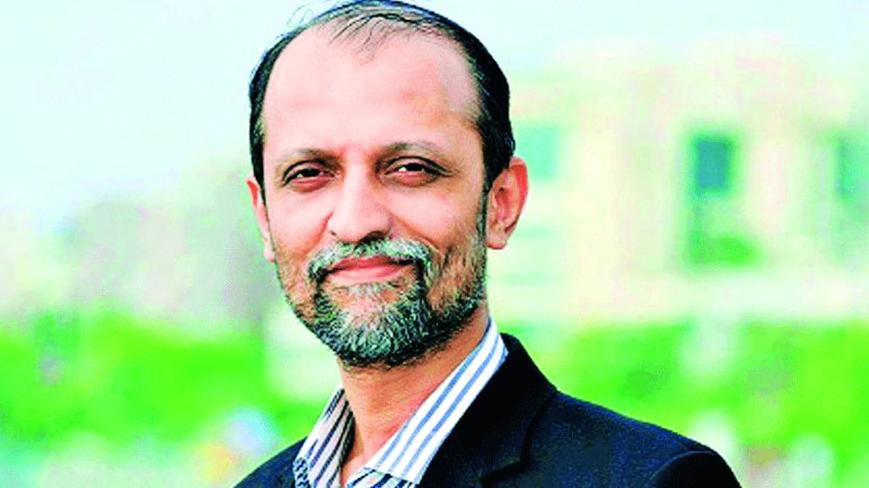
SANJAYA BARU
Dogs do it. Mark territory. So do humans. The methods differ. The objective is the same. To protect one’s turf by limiting entry. Nations use passports and visas, barbed wire and walls. Professions use qualifications. Unions sometimes use muscle power. The successful marking of territory is based on effectiveness of entry barriers. The caste system has been hugely successful given that entry is decided by the accident of birth. Many professions use qualifying exams, minimum qualifications and other means of limiting entry and marking territory.
Lateral entry into government is once again in the news because the Central government tried to open a window where a door was shut. The hurried backtracking on this effort by an otherwise tough-minded prime minister is not surprising. Those who carry out his orders may have been marking their territory.
It would be in keeping with the ‘trade union’ mindset of the various orders of the civil service. Slow to recruit from outside the service, they are quick to find excuses for not doing so.
But why blame the civil service alone for such trade unionism. Consider the appalling case of the dismissal of Dr Ajit Ranade, vice-chancellor of the Gokhale Institute of Politics and Economics (GIPE), Pune, on the grounds that he lacked adequate teaching experience as specified by the University Grants Commission. The teaching profession is another trade union that is quite happy citing rules to prevent lateral entry. Ranade has a stellar academic and research record. Perhaps superior to that of most faculty at GIPE. So what? He did not satisfy entry requirements. This insularity is not just trade unionism. It is a manifestation of professional casteism. Insiders find arguments to keep outsiders out.
Consider the case of Dr Ranade at GIPE. Does a vice-chancellor have to have teaching experience? Many universities have had great vice-chancellors with no teaching experience. K.R. Narayanan, former President of India, was a successful and distinguished vice-chancellor of Jawaharlal Nehru University. Why a vice-chancellor needs 10 years of teaching experience is not clear. A VC certainly needs to have empathy towards teachers but the job requires more administrative experience than teaching experience. With all his teaching experience Jagadish Kumar ended up with a questionable and mediocre track record as vice-chancellor and his record as an administrator was abysmal.
The civil services make much of their entry qualification but as generalists their qualification after a couple of decades in office is in fact their experience. However, that kind of experience is also picked up by professionals in other fields. Lateral entrants into government like Lovraj Kumar and Manmohan Singh proved to be as good civil servants as the best of the Indian Administrative Service (IAS). In fact, IAS officers like Abid Hussain and Naresh Chandra proved to be excellent diplomats when posted to Washington, DC.
True, exceptions do not prove the rule. When an Indian Foreign Service (IFS) diplomat with some professional experience in trade policy tried to become the Indian ambassador to the World Trade Organization, the IAS fought hard to retain that post for its own.
There was a time when the prime minister felt free to appoint eminent persons as diplomats. Nani Palkhivala, L.M. Singhvi, S.D. Muni are some examples. Prime Minister P.V. Narasimha Rao tried to persuade industrialist Hari Shankar Singhania to go as ambassador to Germany. Singhania declined because he felt his company still needed him at the helm. For an inexplicable reason such lateral entry into diplomacy has sharply come down. Prime Minister Manmohan Singh did not appoint a single person from outside the foreign service as ambassador to any country. He succumbed to the trade unionism and professional casteism of the IFS.
What is interesting is that while the civil service tries to keep the doors to lateral entry closed, many members of the civil service happily secure lateral entry into the territory of other professions. There are any number of vice-chancellors across the country from the IAS and IPS, any number of managers of large public sector firms from these services. The rigidly insular civil service has been successful in breaking barriers to entry into other professions. So, we have had IAS officers running an airline and IPS officers running public transport.
As longevity increases and with retirement age fixed at 60 in government, senior citizens have to find new sources of employment. Many retired civil servants are opting for teaching. The late Rahul Khullar of the IAS, who retired as Union commerce secretary, became a popular schoolteacher in a Delhi school. Former Defence Secretary Sanjay Mitra, an IAS officer of the West Bengal cadre, is teaching at IIT Delhi. Former National Security Adviser Shivshankar Menon teaches at Ashoka University. Such examples of lateral entry of civil servants into teaching should make civil servants more open to lateral entry into government. Indeed, it should also make more academic institutions more open to lateral entry of qualified persons into their hallowed portals.
Of course, every job must have some basic qualifications and every profession must have some defining qualifications. An allopathic doctor must have at least an MBBS degree. An aeroplane pilot must have training and a certain number of hours of flying experience. Basic qualifications are necessary. However, there are any number of professions where the relevant qualifications can be picked up over time without one having acquired certification.
Most objections to lateral entry are about turf protection. At the Gokhale Institute the protests against an economist of some distinction becoming vice-chancellor may well have been prompted by jealous senior professors in the running for that post. More often than not, such protests are about limiting competition. That is what animals do too when they mark territory. It’s a survival strategy.
Sanjaya Baru is a writer and Distinguished Fellow at the United Service Institution of India
Comments
-

Aman Nath - Sept. 28, 2024, 5:39 p.m.
This brilliant Baru piece shows us rather clearly that invisible wall which stands between the bureaucracy and the private sector . Everyone knows about this world and can see it from both sides, but we have to keep the pretence going for God knows what reason? It is another form of the Emperor‘s new clothes! Perhaps talking and writing about it again and again as well as discussing it might clear the way and open the minds of the vested interest, just out of shame




